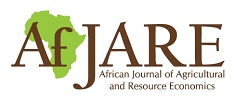Does Rwanda’s flagship microcredit programme boost agriculture and incomes?
Dominique Habimana & Jonathan Haughton
Abstract
One of the three components of Rwanda’s flagship anti-poverty programme, Vision 2020 Umurenge (VUP), is the provision of credit to relatively poor households, nearly all of them farmers. In this paper we estimate the impact of the programme using high-quality household survey data from 2013/2014 and 2016/2017. Using the panel data, the double-difference model shows that households that borrow increase their stock of livestock. This is confirmed by the cross-section inverse probability-weighted regression adjustment models, which also find that VUP borrowing leads to more purchases of farm inputs, greater consumption (especially of home-produced food), lower poverty, and greater secondary school enrolment, but not to more hours worked. While VUP loans account for only 2% of the value of microcredit in Rwanda, they do help fill a need for production credit at a scale large enough to be able to help households appreciably increase their agricultural and other assets, and ultimately their income.
